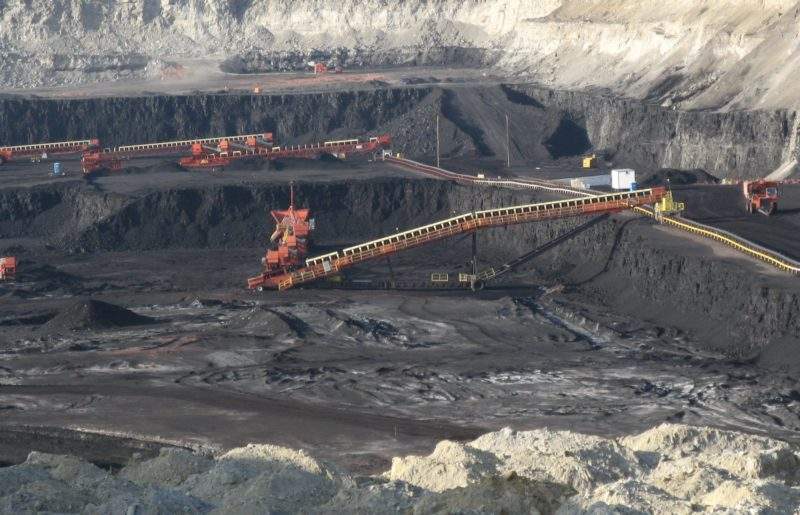
Five Largest Coal-Producing States in the US
Wyoming: 297.2 million short tonnes
The north-western state of Wyoming is the least populous state in the US, but has been the largest coal-producing state since 1986, in large part thanks to ten mines in the Powder River Basin. The Wyoming Mining Association (WMA) estimates that the state has coal reserves of 1.4 trillion tonnes, more than 165 billion of which is recoverable, with some seams in the Powder Basin in excess of 200ft thick.
The WMA claims that the low sulphur content of the coal and ‘world-class’ coal seams have contributed to the state’s significant coal production. The close proximity of coal seams to the surface also eliminates the need for expensive and dangerous digging operations, keeping production costs and risk to workers low. Wyoming’s coal production soared in the 20th century, from 9.4 million tonnes in 1918 to a peak of 466 million tonnes in 2008.
The state was responsible for 40.8% of all US coal production in 2016, and its North Antelope Rochelle mine in the Powder Basin is the largest coal operation in the world. The Peabody-owned project covers over 11,000 hectares, close to double the size of Manhattan island, and 21 freight trains full of coal leave the mine every day for over 100 power plants across the country. Between 2003 and 2016, Wyoming exported over 267 million tonnes of coal to other US states, making the Powder Basin projects an integral part of both the state’s economy, and the power supply of the US.
West Virginia: 79.8 million short tonnes
While West Virginia was the second-largest producer of coal in the US in 2016, its production was less than a third of that of Wyoming’s. The Hobet mine has historically been one of the state’s most productive, and enjoyed rapid growth in the 1970s, from the start of coal production in the family-owned operation in 1974, to a peak annual production of 5 million tonnes in 2002.
However, strike action in 1993 saw the workforce nearly halved, and the mine’s owners Patriot Coal filed for bankruptcy twice between 2012 and 2015, putting the future of one of the state’s largest mines in doubt.
The state employed a much larger number of workers than Wyoming – 11,561 across surface and underground operations in 2016 – but this figure has been in sharp decline from a peak of 22,786 in 2012. This reduction is emblematic of a wider decline in employment, production and profitability in the state, which was responsible for 10.9% of US coal production in 2016.

US Tariffs are shifting - will you react or anticipate?
Don’t let policy changes catch you off guard. Stay proactive with real-time data and expert analysis.
By GlobalDataPennsylvania: 45.7 million short tonnes
The eastern state of Pennsylvania accounted for 6.2% of US coal production in 2016, despite both its anthracite and bituminous operations struggling. The latter is typically used for electricity generation and metal production, while the former is used for heating and is much scarcer; the state has produced just 4.6 million tonnes of anthracite coal, compared to over 50 million tonnes of bituminous coal.
The state’s bituminous operations produced 44 million tonnes in 2016 at 119 mines, down from 48 million tonnes from 137 mines the year before. Anthracite production struggled more, however, dropping by 23% over the period from 1.9 million tonnes to 1.5 million, with five mine closures bringing the number of anthracite operations down to 53 in 2016.
While the Mine Safety and Health Administration estimates that 16 billion tonnes of anthracite coal are present in seams beneath Pennsylvania, with up to half of the resources being recoverable, the rise of renewable energy sources and inexpensive natural gas has lowered demand for coal.
Illinois: 43.4 million short tonnes
Illinois has estimated coal reserves of 200 billion tonnes, in third place behind Montana and Wyoming. Of these reserves, 38 billion is recoverable and it is valued at $48bn. The state exported two-thirds of its coal to Midwestern and south-eastern states, with exports from the Illinois Basin alone increasing by 180% to 7 million short tonnes between 2010 and 2011. These exports enabled the state to produce 5.9% of US coal production in 2016.
However, much of the state’s coal is considered ‘high-sulphur’, containing up to 6% of the impurity, which can contribute to the formation of acid rain when the coal is burned. China banned imports of coal with more than 1% sulphur in 2015, undermining Illinois exports, and the competition from low-sulphur coal deposits elsewhere in the US has led to “the closing of a number of Illinois coal mines and in the loss of mining jobs”, according to the Illinois State Geological Survey of the University of Illinois at Urbana-Champaign.
Kentucky: 42.9 million short tonnes
The state of Kentucky has historically been a significant contributor to the US coal industry, reaching peak production of 179.4 million tonnes in 1990, when US production exceeded 1 billion tonnes for the first time. However, Kentucky’s relatively low reserves – estimated to be around 87.6 billion tonnes – and the wider decline of coal has affected production and employment in the sector.
The state’s total production fell from 120.8 million tonnes to 42.9 in the ten years from 2006 to 2016, equivalent to 5.8% of the total US production, and the number of people employed in the coal industry reached its lowest figure since 1898. Around 6,900 people were employed in the sector in 2016, with employment dropping by 17.9% in the first three months of the year alone. This slump triggered decreases in production of 21.6% in Eastern Kentucky and 5.7% in Western Kentucky, creating uncertainty over the future of coal in the state.


